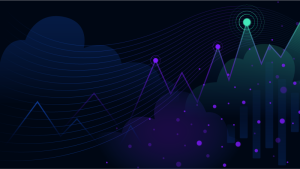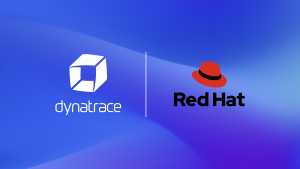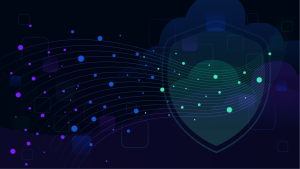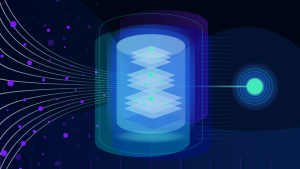In our Dynatrace Perform 2024 guide, we explore some of the key cloud observability trends that organizations should consider, including composite AI, AI observability, platform engineering, and more.
Companies now recognize that technologies such as AI and cloud services have become mandatory to compete successfully.
AI data analysis can help development teams release software faster and at higher quality. AI-enabled chatbots can help service teams triage customer issues more efficiently. And security teams can use AI to proactively address potential threats to their IT environments.
According to the recent Dynatrace report, “The state of AI 2024,” 83% of technology leaders said AI has become mandatory to keep up with the dynamic nature of cloud environments. And according to an IDC report, organizations can now realize a return on AI investments within 14 months.
At the same time, the Dynatrace report revealed that 98% of technology leaders are concerned that some AI could be susceptible to unintentional bias, error, and misinformation.
So how can organizations ensure data quality, reliability, and freshness for AI-driven answers and insights? And how can they take advantage of AI without incurring skyrocketing costs to store, manage, and query data?
These are the goals of AI observability and data observability, a key theme at Dynatrace Perform 2024, the observability provider’s annual conference, which takes place in Las Vegas from January 29 to February 1, 2024.
AI observability and data observability
The importance of effective AI data analysis to organizational success places a burden on leaders to better ensure that the data on which algorithms are based is accurate, timely, and unbiased. Increasingly, this focus on data quality will push organizations to adopt data observability technologies, which help organizations to determine the quality of their data.
But organizations also need to balance increasing AI adoption with the risks of runaway costs associated with increasing adoption.
Enter AI observability, which uses AI to understand the performance and cost-effectiveness details of various systems in an IT environment. As organizations adopt more AI technologies, the associated costs are skyrocketing. A key theme at Dynatrace Perform 2024 is the need for AI observability and AI data analysis to minimize the potential for skyrocketing AI costs.
‘Composite’ AI, platform engineering, AI data analysis through custom apps
This focus on data reliability and data quality also highlights the need for organizations to bring a “composite AI” approach to IT operations, security, and DevOps. A composite approach combines predictive, causal, and generative AI to ensure better data reliability. Causal AI is critical to feed quality data inputs to the algorithms that underpin generative AI.
This composite approach is also driving organizations to seek a unified observability platform that provides contextualized, centralized data in real time.
Another key theme at Dynatrace Perform 2024 is organizations’ growing adoption of platform engineering, which helps accelerate the delivery of software applications. Platform engineering improves developer productivity by providing self-service capabilities with automated infrastructure operations. How organizations use methodologies such as platform engineering may determine organizations’ success or failure in the year to come.
Speakers at Dynatrace Perform 2024 will also explore how organizations can garner business value from their data by building custom applications that serve core organizational needs. Once organizations can unify their data in a trusted cloud observability platform, they can act on—and trust—the insights they gather. In turn, organizations have the tools to build secure, compliant custom apps that serve their business needs and fit easily into their larger multicloud ecosystems.
these key cloud observability trends in 2024. Join us at Dynatrace Perform 2024, either on-site or virtually, to explore these themes further.
Dynatrace Perform 2024 news
At Dynatrace Perform 2024 in Las Vegas, the headliner theme is AI-enabled data. Check back here throughout the event for the latest news, insights, and announcements.
Deriving business value with AI, IT automation, and data reliability
When it comes to increasing business efficiency, boosting productivity, and speeding innovation, artificial intelligence takes center stage. In fact, according to the Dynatrace report, “The state of AI 2024,” nearly three-quarters of IT operations, development, and security teams plan to use AI to become more proactive in executing their work. Further, 62% of organizations have already changed the job roles and skills they are recruiting for to incorporate AI. Because of these trends, AI data analysis and IT automation are front and center at Perform 2024.
But for organizations to maximize the business benefits of AI, they need to continuously evaluate their data to ensure it’s high-quality data, which is the bedrock of solid decision making. This is especially true when taking a composite approach to AI, converging AI types such as causal and generative AI to ensure data reliability. For example, high-quality data and predictive AI enable causal AI to provide precise, continuous, and actionable insights in real time.
The following resources provide more information on how to get the most out of your AI investment, the importance of data quality for business success, and automating manual IT processes to prioritize innovation.
 |
Why growing AI adoption requires an AI observability strategy – blog
While AI adoption brings operational efficiency and innovation for organizations, it also introduces the potential for runaway AI costs. How can organizations use AI observability to optimize AI costs? |
 |
What is explainable AI? The key to closing the AI confidence gap – blog
As today’s AI models become increasingly complex, explainable AI aims to make AI output more transparent and understandable. |
 |
Responsible AI must-haves for unified observability and security – blog
As organizations turn to AI, how can they ensure that the data and algorithms that fuel AI are based on trusted, unbiased, and responsible AI? |
 |
The state of AI in 2024: Overcoming adoption challenges to unlock organizational success – blog
In the “State of AI” report, respondents outlined the benefits and challenges of AI. |
 |
What is causal AI? Why this deterministic AI approach is critical to business success – blog
Today’s organizations need to go beyond a traditional, correlation-driven approach to identify the underlying causes and effects of an event or behavior and drive better DevOps automation. Enter causal AI. |
 |
Measuring the importance of data quality to causal AI success – blog
Causal AI can accurately pinpoint why an event occurred, but the effectiveness of AI depends on high-quality data. Discover common data quality challenges, how to improve data quality, and more. |
Cloud observability is central to platform engineering
The uptick in digital transformation initiatives has created a drive for scalability among global organizations. But the demand for faster delivery speeds and higher-quality software has demonstrated that current software delivery methods are no longer sufficient. Teams face siloed processes and toolsets, vast volumes of data, and redundant manual tasks. To release software at the speed and quality that customers demand, organizations have begun prioritizing automation and creating self-service capabilities, also known as platform engineering.
Platform engineering involves building internal platforms to provide a self-service library to software developers. The goal of the practice is to reduce manual effort and redundant tasks to allow developers to spend more time innovating. The discipline shows promise: According to Gartner, 80% of software engineering organizations “will establish platform teams as internal providers of reusable services, components, and tools for application delivery” by 2026. Recent research also found that 54% of organizations are investing in platforms to enable easier tool integration and collaboration between teams involved in automation projects.
But to achieve the operational efficiency, agility, and optimized developer experience that platform engineering stands to bring, organizations need cloud observability and AI data analysis integrated into their platforms. Building observability-as-code into platform engineering enables automatic service-level objective creation, defined ownership, enriched context, and problem routing to ensure platforms remain available and reliable for developers.
To learn more about platform engineering, explore the following resources.
Custom apps deliver value for key business needs
More organizations are increasing their reliance on cloud-based technologies. In fact, Gartner forecasts that spending on public cloud services will total $679 billion in 2024 and exceed $1 trillion by 2027. In 2023, organizations mostly used these services as a technology disruptor and capability enabler. But by 2028, these cloud-based services will be a business necessity.
Although the business case for cloud-native technologies is clear, they often require a complex mix of multicloud, hybrid cloud, and on-premises environments. Organizations increasingly struggle with the challenge of monitoring the explosion of microservices and tools that come with these environments.
While app-centric serverless approaches abstract some of the complexities of cloud-native architecture, as the analyst firm Forrester notes, the next frontier for serverless adoption is at the edge. Edge computing brings compute and data storage closer to where data is generated to help reduce costs, boost performance, and improve customer experience.
Organizations are also turning to AI data analysis to enable cloud cost efficiency through FinOps, and to address threat detection, operations automation, and deployment validation use cases. As organizations adopt large language models and generative AI technologies to accelerate efficiency, they introduce yet another dimension of complexity—including security and energy consumption concerns—that needs monitoring.
With this myriad of concerns, organizations need an automated, AI-driven, observability platform approach that can run specialized analysis on a massive scale through custom apps. When accessing observability data for every use case from a schemaless, indexless data lakehouse, out-of-the-box apps provide instant business-critical analysis. And the ability to easily create custom apps enables teams to do any analytics at any time for any use case.
Learn more about what kinds of business questions custom apps can answer from the following resources.
 |
Dynatrace and Red Hat expand enterprise observability to edge computing – blog
Cloud-native workloads at the edge save costs and boost performance. However, edge observability can be challenging due to distribution, resource limits, and security issues. Continue reading to learn more. |
 |
Sustainable IT: Optimize your hybrid-cloud carbon footprint – blog
As global warming increases, growing IT carbon footprints make energy-efficient, carbon-optimized computing a top priority for many organizations. |
 |
What is FinOps? How to keep cloud spend in check – blog
As cloud spend continues to reach new heights, organizations need a new approach to keep costs in check. Enter FinOps, a public cloud management philosophy that aims to control costs. |
 |
Automated Change Impact Analysis with Site Reliability Guardian – blog
The Dynatrace® Site Reliability Guardian simplifies the adoption of DevOps and SRE best practices to ensure reliable, secure, and high-quality releases. |
 |
Improving customer experience with business process monitoring – blog
Monitoring business processes is one thing organizations can do to help improve the key business processes that enable them to provide great customer experiences. |
 |
AppEngine empowers organizations to create custom apps for better data insights – blog
Learn more about creating custom apps for better data insights. |
 |
Start strong: Words of wisdom for creating Dynatrace Apps – blog
With the release of Dynatrace AppEngine, we revealed how to create your own custom Dynatrace® Apps. |
Unified observability and security for business value
As organizations increasingly rely on AI, automation, and cloud operations, data observability and security have never been more vital to business success. As the volume of data grows, organizations urgently seek to ingest and analyze it faster and at a greater scale. However, the costs and risks of poor observability and security of that data are greater than ever. As a result, organizations will increasingly require data observability to enable the rapid and secure ingestion of high-quality and reliable data that is ready to use.
Unified data observability and security are essential to generating insights that users can trust by ensuring the freshness of data, identifying anomalies, and remediating errors. It also supports responsible and accurate AI data analysis, ensures that organizations have the tools to build secure, compliant custom apps, and enables efficient automation, allowing organizations to do more with less—a fast-growing requirement.
Check out the resources below to learn more about unified observability and security for achieving business value.
 |
Technology predictions for 2024: Dynatrace expectations for observability, security, and AI trends – blog
In our 2024 technology predictions roundup, we explore our expectations for key technologies, such as digital immune systems, generative AI, and more. |
 |
Cloud observability delivers on business value – blog
Cloud observability enables organizations to deliver business value by reducing costs, minimizing IT incidents, and providing better user experiences, as CEO Rick McConnell outlined at the recent Innovate conference. |
 |
What is data observability? – knowledge base
Learn how data observability can help identify, alert, troubleshoot, and resolve data issues in real time. |
 |
Achieving business resilience with modern observability, AI, and automation – blog
Organizations need a technology foundation that promotes business resilience, agility, and flexibility. |
 |
Global Report Reveals DevOps Automation is Becoming a Strategic Imperative for Large Organizations, but Only 38% Have a Clear Strategy for Implementing It – press release
Automation is helping teams improve software quality and reduce costs, yet organizations have only automated 56% of their DevOps lifecycle |
 |
Security by design enhanced by unified observability and security – blog
With Dynatrace, Soldo teams can see what’s happening in a cluster and also correlate among all the applications and workloads. This includes the Kubernetes cluster itself and all the other elements running in their IT environment. |
 |
Dynatrace Grail: The data lakehouse for observability and security analysis and automation – blog
Organizations need an effective way to store, contextualize, and query data to get immediate insights and drive automation. |
 |
Power boundless observability, security, and business analytics with Grail – resource center
Learn more about Dynatrace Grail: The data lakehouse for observability and security analysis and automation. |
Join us for Dynatrace Perform 2024.
Ready to try Dynatrace for free? Learn more about our trial.
 11 months ago
64
11 months ago
64